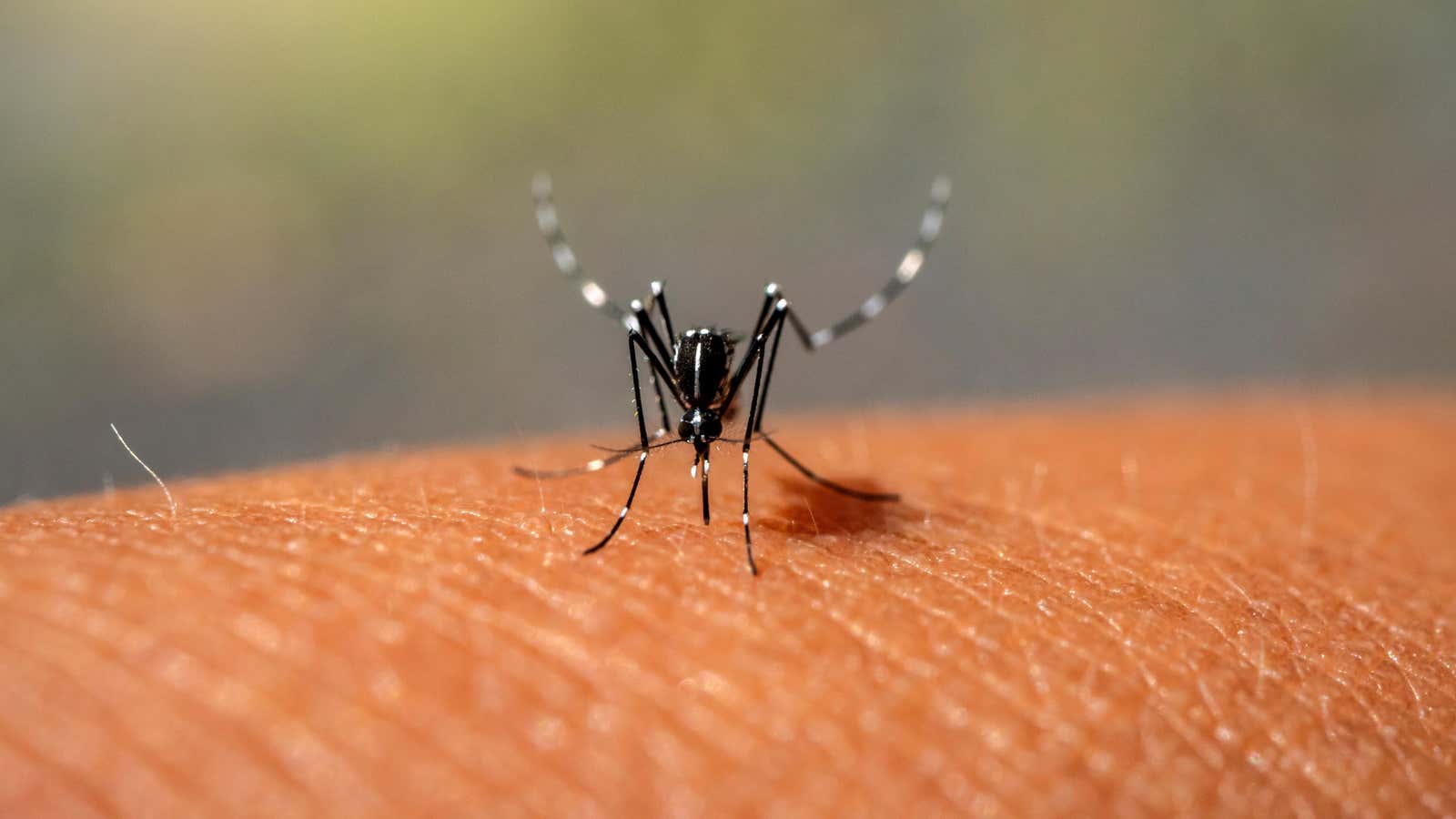What You Need to Know About Deadly Mosquito-Borne Disease in Arizona

An Arizona resident recently contracted a mosquito-borne disease known as dengue , and dengue virus has been found in mosquitoes in the area. Dengue, usually associated with tropical countries, may first spread to Arizona.
This isn’t the first time dengue has appeared in the United States, but we don’t usually see local transmission of the disease in the 48 contiguous states. There have been at least three local cases of dengue fever reported in Florida this year , and there have been several localized outbreaks in recent years, with the largest reported in 2010 (66 cases). Dengue is found in several US territories, including Puerto Rico, American Samoa, and the US Virgin Islands.
So how dangerous is dengue fever and what should you know about it? Let’s look at the facts.
How dangerous is dengue?
About 75% of people infected with dengue have no noticeable symptoms. Statistically , 25% will get sick, 5% will get severe dengue, and 0.01% will die from it.
It’s worth noting that you’re more likely to get severe dengue if you’ve had dengue before. There are four types of dengue virus, so theoretically you could get it four times in your life. But if you’ve had one type and then contracted another, that second infection carries a higher risk of developing severe dengue than the first.
Symptoms of a common dengue infection may include nausea, vomiting, rash, or muscle or joint pain. There may be a feeling of pain behind the eyes. The illness usually lasts two to seven days. The CDC says you should rest during this time and can take acetaminophen (Tylenol), but not aspirin or ibuprofen.
Symptoms of severe dengue may include pain or tenderness in the abdomen, bleeding from the nose or gums, blood in vomit or stool, vomiting more than three times in 24 hours, or feeling unusually tired or irritable. If you have these signs, seek immediate medical attention.
How is dengue spread?
Dengue is caused by a virus, and this virus is transmitted by mosquitoes. However, not all mosquitoes can transmit it. This requires Aedes aegypti or Aedes albopictus mosquitoes . These mosquitoes bite both during the day and at night, and they can breed in small containers of stagnant water. Both species are more common in the southern United States than in northern areas.
(The small brown mosquitoes that live in more northern areas and bite more often at night are Culex mosquitoes, which do not carry dengue fever. However, they can transmit West Nile virus .)
For a mosquito to infect you with dengue, it must bite a sick dengue and then bite you. If it occurs in the area, it is considered local transmission of dengue. People can contract dengue while traveling and then bring it home, which accounts for the majority of dengue cases in the continental United States.
How not to get dengue
The main way to protect yourself from dengue fever is to protect yourself from mosquito bites, and you can also help protect your community by making sure mosquitoes don’t have breeding grounds.
Mosquitoes lay their eggs in standing water. These can include items such as trash cans and tires that fill with rainwater, water sources such as dog bowls and bird feeders, and puddles that form on the ground or in tarps. Drain these items regularly if you can’t prevent them from filling up in the first place. (For example, if your dog has an outdoor water bowl, be sure to empty it twice a week.)
To protect yourself from bites, the CDC recommends using an effective insect repellent (such as one containing DEET), wearing long-sleeved shirts and long trousers whenever possible, and using window screens to keep mosquitoes out of your home.
There is a vaccine for dengue that is currently approved for children aged 9 to 16 living in areas where dengue is common. It is not approved for people who simply travel to those places.